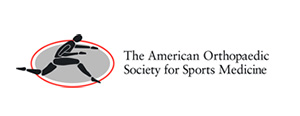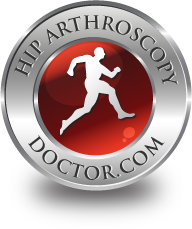
Research
Dr. Hyman regularly attends national and international meetings. Recent Hip Arthroscopy meetings were held in England (2015) and France (2012). Dr. Hyman also lectured at the International Society for Hip Arthroscopy (ISHA) meeting in Mexico. We bring you the latest cutting edge information, global expertise and advanced technology in arthroscopic surgery for the hip. As the first Georgia member of the ISHA organization, Dr. Hyman wants to make sure the Atlanta community is kept 'in the loop' with emerging technologies in hip arthroscopy.

In addition to treating labral tears, Femoroacetabular impingement (FAI), loose bodies, synovitis, dislocations, cartilage damage and dysplasia, Hip arthroscopy is now being used more readily for: Greater trochanteric bursectomy, hip instability, adhesive capsulitis of the hip, release of external and internal snapping hip syndromes, and repairs of gluteus medius tears in the peritrochanteric space. Issues noted to be observed complications from around the world:
- transient Neurpraxias (nerve stretch)
- DVT (deep venous thrombosis)
- scuffing, scratching or gouging joint cartilage
- broken wires, shavers, beaver blade tips
- retained loose or foreign bodies,
- pressure necrosis of pinched skin
- numbness around genitalia, vaginal tearing, impotence
- unknown radiation effects
Very rare complications: infection, Fracture, excessive Fluid extravasation (leakage), Dislocation after scope. Broken anchors, hemarthrosis, dissociated anchors or suture. Symptom exacerbation in about 5%. Entrapped drains. Hip Arthroscopy may not be of advantage (or is contraindicated) in some cases of obesity, excess stiffness, DJD / arthritis, when there's been extensive prior surgery, or in cases of more advanced Avascular necrosis (AVN).
Research Articles on Hip arthroscopy
- Revision Hip Arthroscopy
- Hip Arthroscopy for Labral Tears
- Outcomes for FAI surgery with Hip Arthroscopy
- One Year Outcome in Patients Who Underwent Hip Arthroscopy with Microfracture
- Arthroscopic Labral Repair in the Hip: Surgical Technique and Review of the Literature
- Can Microfracture Produce Repair Tissue in Acetabular Chondral Defects?
- Clinical Presentation of Femoroacetabular Impingement
- Femoroacetabular Impingement in 45 Professional Athletes: Associated Pathologies and Return to Sport Following Arthroscopic Decompression
- Arthroscopic Management of Femoroacetabular Impingement
- Hip Arthroscopy: Current Indications, Treatment Options, and Management Issues
- Hip Disease in the Young, Active Patient: Evaluation and Nonarthroplasty Surgical Options
- Endoscopic Iliotibial Band Release for External Snapping
- Internal Snapping Hip Syndrome: Treatment by Endoscopic Release of the Iliopsoas Tendon
- Revision Hip Arthroscopy
Improvement Following Arthroscopic Hip Surgery
Marc J Philippon, MD Vail CO
Patients felt improvement at 3 months following surgery; however, largest functional improvement was not seen until 7 months. This information is important for patient education so potential outcome can guide patient expectations. Hip arthroscopy often resulted in improved function and high patient satisfaction. (Keep in mind this was a study of a "very mixed bag of patients," of all different ages, and doesn't describe what TYPE of arthroscopic surgery they had - there are many different types). GOAL of the study: To determine patients' functional improvement over time during the first year following arthroscopic hip surgery. Data was collected on 115 patients (65 females, 50 males) following arthroscopic hip surgery(3/2005-1/2006) with an average age of 40(range 14-72). Patients completed subjective forms preoperatively(n=115), at 3 months(n=62), 5 months(n=22), 7 months(n=32), 9 months(n=31) and 12 months(n=18) postoperatively. Hip Outcome (HOS), Modified Harris Hip(MHH), Non-Arthritic Hip(NAH) and patient satisfaction (1=unsatisfied,10=very satisfied) scores were collected. ADL HOS, MMH and NAH scores showed:
- Significant improvement at 3 months over preoperative scores (p<0.05).
- Significant improvement over pre-op at 7 months.
- Largest functional improvement occurred between 5 and 7 months.
- At 3 months 44% reported pain with walking, 50% at 5 months and 27% at 7 months. (1 in 4 patients still had pain with walking)
- At 7 months 23% considered hip function abnormal; however only 16% considered their condition unchanged/worse at 3 months.
- Average patient satisfaction at all time points was 8.0 (range 1-10).
I would like to thank you sincerely for the great care that you have provided me. I am deeply grateful to both of you and all your wonderful clinic and hospital team.
Dr. Hyman diagnosed my problem right away. I had surgery a couple of months later and now after 2 years I feel like a new person.
Since Dr. Hyman operated on my left hip I’ve been able to walk better, longer, and with better ease than I could ever imagine.
I thank God every day that I had that surgery since I have finally gotten rid of the pain that has kept me awake at night for years.
I appreciate you taking the time to educate me about my injury. I also appreciate the kindness and professionalism of the entire staff at Atlanta Sports Medicine.
Thank you so much from the bottom of my heart. For the first time in approximately a year and a half I am pain free.
I appreciate the attentive, professional care and could not envision a better experience. I truly am thankful to be under your care.







